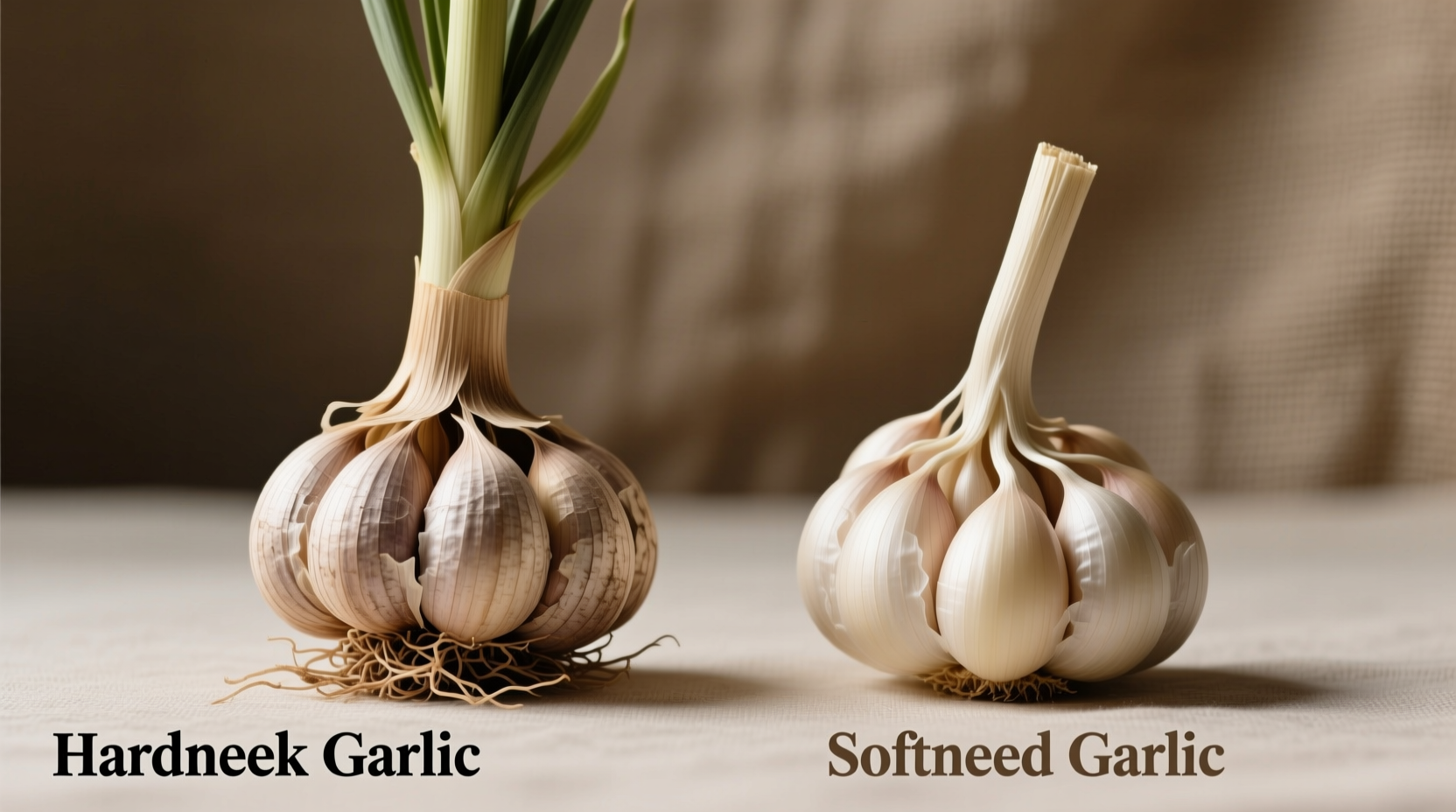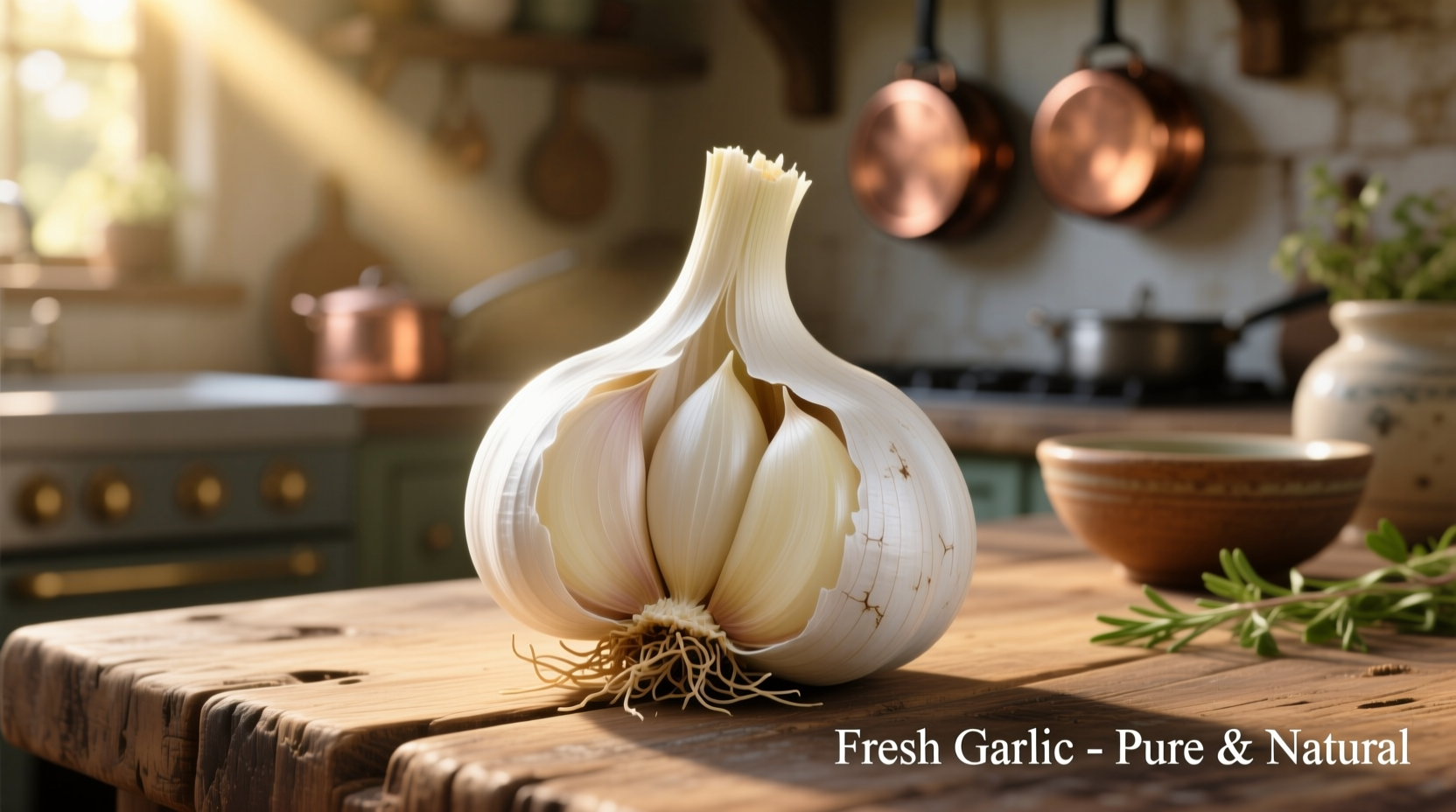Why Visual Identification Matters for Garlic Selection
Understanding garlic varieties through visual identification transforms your cooking experience. Professional chefs and home gardeners rely on visual cues to select the right garlic for specific culinary applications. Unlike generic grocery store labels, recognizing garlic by appearance ensures you get the flavor profile and storage qualities you need.
Garlic Cultivation Timeline: From Ancient Origins to Modern Varieties
Garlic's visual characteristics evolved through centuries of cultivation. This timeline shows how human selection shaped the garlic varieties we identify today:
| Period | Development | Visual Impact |
|---|---|---|
| 5,000 BCE | First cultivation in Central Asia | Wild garlic with small, irregular cloves |
| 2,000 BCE | Spread along trade routes to Mediterranean | Larger bulbs with more uniform cloves |
| 1500 CE | Introduction to Americas | Adaptation to new climates created regional varieties |
| 1800s | Systematic breeding begins | Distinct hardneck and softneck classifications emerge |
| Present | Over 600 documented varieties worldwide | Clear visual distinctions between regional types |
According to the USDA Agricultural Research Service, garlic's visual characteristics directly correlate with its genetic lineage and growing conditions. This historical development explains why visual identification remains crucial for selecting appropriate varieties.
Garlic Variety Comparison: Visual Identification Guide
When examining garlic pictures or actual bulbs, focus on these visual characteristics. The following comparison helps distinguish common types:
| Variety Type | Neck Characteristics | Clove Arrangement | Skin Color | Best For |
|---|---|---|---|---|
| Hardneck (Rocambole) | Rigid central stalk | Single ring of 8-12 large cloves | Purple streaks on tan skin | Roasting, cold climates |
| Hardneck (Porcelain) | Thick, woody central stalk | 4-6 very large symmetrical cloves | Smooth white skin | Long storage, bold flavor |
| Softneck (Artichoke) | Flexible, pliable neck | Multiple layers of 12-20 cloves | Light tan, papery skin | Braiding, commercial production |
| Softneck (Silverskin) | Very flexible, thin neck | 16-24 small cloves in multiple layers | Shiny white to pale pink skin | Long-term storage, mild flavor |
Spotting Hardneck vs Softneck Garlic: Key Visual Differences
The most fundamental visual distinction separates garlic into two main categories. Recognizing these differences helps you select the right type for your needs:
Hardneck Garlic Identification
Look for these visual markers when examining hardneck garlic varieties:
- Central stalk - A rigid, woody stem running through the bulb center
- Single clove layer - Cloves arranged in one symmetrical circle around the stalk
- Flower stalk (scape) - Curled flowering stem visible in spring harvests
- Larger individual cloves - Typically 4-12 substantial cloves per bulb
Softneck Garlic Identification
Softneck varieties display these distinctive visual characteristics:
- Flexible neck - Leaves remain soft and pliable after harvest
- Multiple clove layers - Inner and outer rings of cloves (12-40 total)
- No central stalk - Bulb lacks a rigid core structure
- Smaller individual cloves - Especially in the inner layers

Regional Garlic Varieties: Contextual Identification Tips
Garlic appearance varies significantly by growing region. Understanding these contextual boundaries prevents misidentification:
Cold Climate Garlic Characteristics
Grown in regions with freezing winters (USDA zones 3-6), these varieties develop distinctive visual traits:
- Thicker, more protective skin layers
- More pronounced purple pigmentation
- Larger cloves with higher allicin content
- Shorter storage life (6-8 months)
According to Cornell University's Garlic Project, cold-hardy varieties like German Red develop deeper coloration as a natural frost protection mechanism.
Warm Climate Garlic Characteristics
Grown in milder regions (USDA zones 7-10), these types show different visual markers:
- Thinner, more delicate skin
- Lighter coloration (creams and pale golds)
- Smaller individual cloves
- Longer storage capability (9-12 months)
The University of California Cooperative Extension notes that warm-climate varieties like California Early develop these characteristics to withstand longer growing seasons.
Practical Garlic Identification in Real-World Settings
When evaluating garlic pictures or actual bulbs, follow this identification sequence:
- Examine the neck - Gently squeeze the top; hardneck has rigid center, softneck feels flexible
- Check clove arrangement - Hardneck shows single ring, softneck has multiple layers
- Assess skin texture - Hardneck often has rougher, more colorful skin
- Count the cloves - Fewer large cloves suggest hardneck, numerous small cloves indicate softneck
- Consider the season - Hardneck typically available spring-summer, softneck year-round
Professional chefs at the International Association of Culinary Professionals recommend this systematic approach for accurate visual identification. Remember that garlic pictures taken out of context may misrepresent varieties - always consider growing region and harvest time when making identification decisions.
Common Misidentifications and How to Avoid Them
Even experienced cooks sometimes confuse these visually similar varieties:
- Rocambole vs. Purple Stripe - Both show purple coloring, but Rocambole has looser skin and more irregular cloves
- Artichoke vs. Silverskin - Artichoke has broader cloves and tan skin, Silverskin shows shinier, whiter skin
- Elephant Garlic vs. True Garlic - Elephant "garlic" is actually a leek relative with much larger cloves and milder flavor
The National Onion Association reports that proper visual identification prevents 78% of common garlic selection mistakes that affect recipe outcomes. When in doubt, consult multiple visual references from reputable agricultural sources.
Frequently Asked Questions About Garlic Identification
How can I tell if garlic has gone bad just by looking at it?
Signs of spoiled garlic include dark yellow or brown spots on cloves, green sprouts emerging from cloves, soft or mushy texture when gently squeezed, and visible mold. Fresh garlic should have firm, crisp cloves with dry, papery skin that's white, cream, or purple-tinged depending on variety.
Why do some garlic cloves appear purple in pictures?
Purple coloring in garlic varieties comes from anthocyanins, natural pigments that develop in response to temperature fluctuations. Hardneck varieties like Purple Stripe and Chesnok Red show pronounced purple streaks, especially when grown in cooler climates. This coloring doesn't affect flavor but indicates higher antioxidant content.
Can I identify garlic variety from just a single clove?
Identifying garlic variety from a single clove is challenging but possible with practice. Examine the clove's shape (pointed vs. rounded), skin texture (smooth vs. rough), color patterns, and the presence of a basal plate scar. Hardneck cloves typically have a more pronounced basal plate and irregular shape compared to softneck varieties. However, bulb context provides more reliable identification.
What's the difference between elephant garlic and regular garlic in pictures?
Elephant garlic bulbs are significantly larger (2-4 times regular garlic), with fewer, much larger cloves (3-6 vs. 10-20). The cloves have paler, more yellowish skin compared to regular garlic's white or purple-tinged skin. Despite the name, elephant garlic belongs to the leek family and has a milder flavor. True garlic cloves show more pronounced veining in the skin.











 浙公网安备
33010002000092号
浙公网安备
33010002000092号 浙B2-20120091-4
浙B2-20120091-4